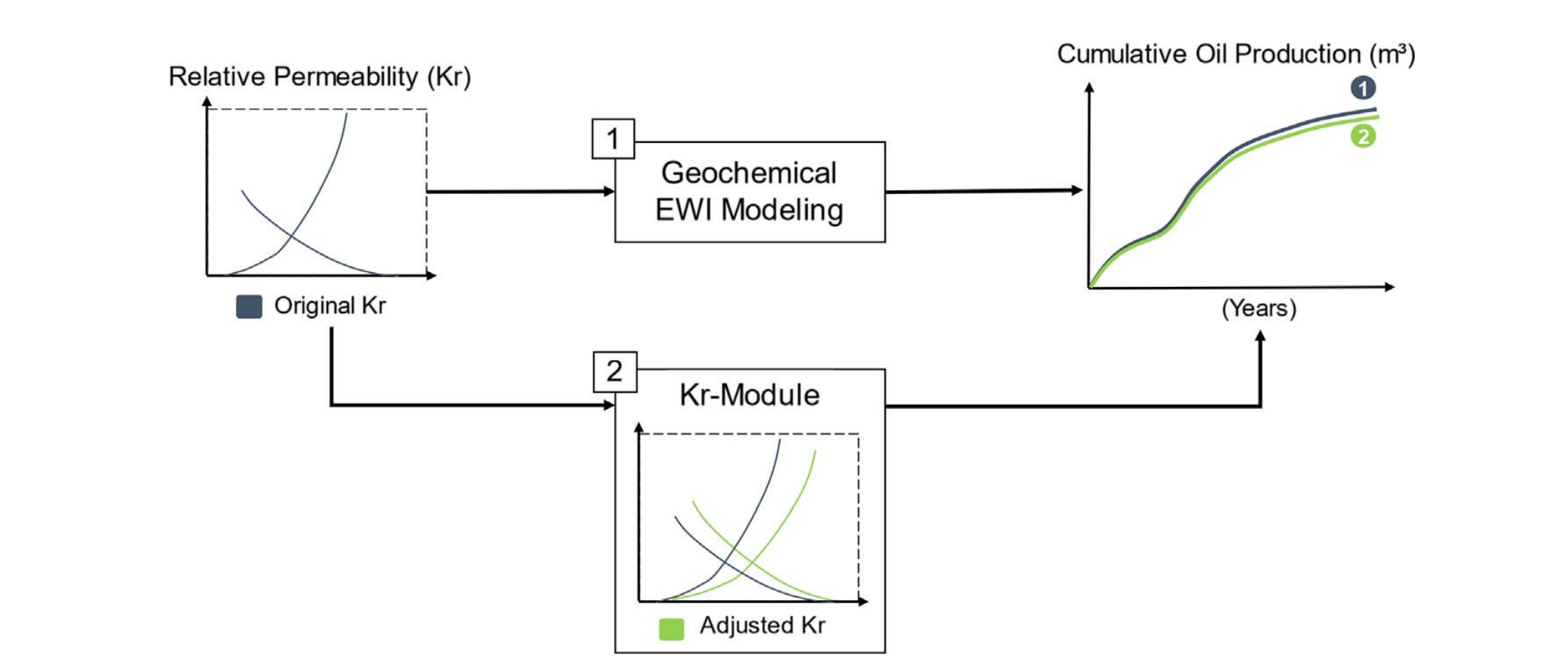Optimization of ionic concentrations in engineered water injection in carbonate reservoir through ANN and FGA
摘要
活性注入(EWI)已被越来越多地测试和应用于提高油藏中的流体驱替效果。通过改变离子浓度来与孔壁发生相互作用,从而促进了油的流动性。在碳酸盐岩中,这种机制改变了天然岩石的润湿性,成为一种相当具有吸引力的采收方法。
目前,基于实验数据的简化模型仍限制了这种注入方法的数值模拟。因此,本研究利用人工神经网络(ANN)的学习能力将离子组合与相对渗透率(Kr)之间的分析关联进行整合,以描述润湿性改变。
优化巴西盐下基准模型注入系统中的离子组成,以最大化油田的净现值(NPV)。优化结果表明,对于测试的案例来说,EWI是最有利可图的方法。与常规的水注入相比,EWI还使油的采收量增加了约8.7%,并且减少了约52%的累积水生产量。
方法论
由于这项工作仅在计算环境中进行,因此需要使用合成信息来构建未来神经网络训练的数据库。因此,选择了CMG提供的一些模板。我们使用EWI地球化学模拟与传统软件(组分模拟器)模拟了这些模板,对每种情况进行了不同矿化度的模拟。
之后,一个特定的算法(Kr-Module)调整了一个常规模板的初始相对渗透曲线,直到获得与地球化学模拟相同的生产模拟。生成的数据库由原始Kr和相应的矿化度度案例作为输入,以及新发现的Kr曲线作为输出,开始网络开发。
在培训阶段,我们测试了不同的网络模式,直到达到最大的预测质量,基于统计工具。网络通过原始曲线和给定的盐度提供了一个新的Kr曲线。然后,我们将最佳的神经网络与模拟耦合,通过比较地球化学模拟(在CMG软件中模拟)和ANN之间的生产结果来进行验证。
Abstract.
Engineered Water Injection (EWI) has been increasingly tested and applied to enhance fluid displacement in reservoirs. The modification of ionic concentration provides interactions with the pore wall, which facilitates the oil mobility. This mechanism in carbonates alters the natural rock wettability being quite an attractive recovery method. Currently, numerical simulation with this injection method remains limited to simplified models based on experimental data. Therefore, this study uses Artificial Neural Networks (ANN) learnability to incorporate the analytical correlation between the ionic combination and the relative permeability (Kr), which depicts the wettability alteration.
The ionic composition in the injection system of a Brazilian Pre-Salt benchmark is optimized to maximize the Net Present Value (NPV) of the field. The optimization results indicate the EWI to be the most profitable method for the cases tested. EWI also increased oil recovery by about 8.7% with the same injected amount and reduced the accumulated water production around 52%, compared to the common water injection.
Methodology
As this work was performed only in a computational environment, it was necessary to use synthetic information to compose the database for future neural network training; therefore, some templates provided by CMG were selected. We simulated these templates using EWI geochemical modeling with different salinity for each case through conventional software (compositional simulator). After that, a specific algorithm (Kr-Module) adjusted the initial relative permeability curves of a regular template until obtaining the same production simulation with geochemical modeling. The database generated was composed of the original Kr and corresponding salinity case as input and the newfound Kr curve as output, starting the network development. At the training stage, we tested different network patterns up to the maximum forecasting quality, based on statistical tools. The network provided a new Kr curve through the original curve and a given salinity. Then, we coupled the best neural network to the simulation, performing the validation by comparing the production outcome between the geochemical simulation (modeled in the CMG software) and the ANN.





